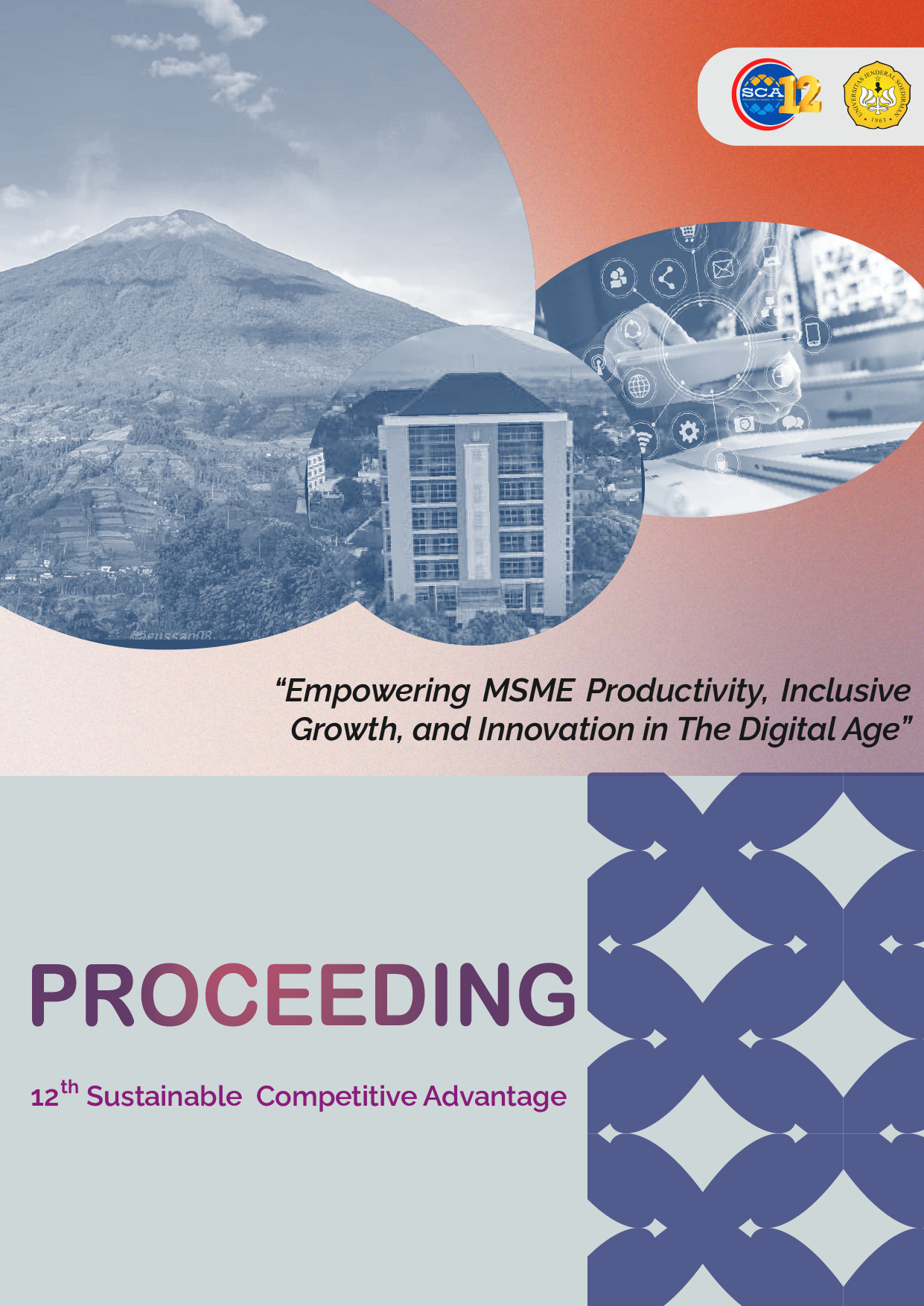Identification of Potential Cooperation Between MSMEs and BUMDES to Improve The Economy of The Community in Sikapat Village Banyumas Regency
Abstract
In 2020, in Banyumas Regency 84,350 MSMEs absorb 127,534 workers. However, these MSMEs have not significantly improved people's welfare because, during 2011-2019, the average proportion of poor people in Banyumas Regency was higher than the average for Central Java Province. This is due to the low productivity of SMEs. One solution to these problems is to optimize cooperation between MSMEs and Village-Owned Enterprises (BUMDES). Both are potential villages, so if they can work together, they will be a force in encouraging community welfare improvement. One of the areas in Banyumas Regency with a relatively large number of MSMEs and there is a BUMDES that performs well is Sikapat Village, Sumbang District. This study aims to identify problems and potential for collaboration between MSMEs and BUMDES in Sikapat Village, which was carried out qualitatively using primary data. The results showed that the problems of MSMEs were related to capital, production, and marketing. Opportunities for cooperation between MSMEs and BUMDES are possible. BUMDES aims to develop the village economy and improve community welfare, while the community (MSMEs) also has positive expectations for BUMDES to be a solution to their problems. To create harmonious cooperation, it is necessary for the efforts of both parties to provide mutual benefits from the cooperation. To create synergistic cooperation, support from various stakeholders is needed.
Keywords: Potential cooperation; BUMDES; MSMEs; public welfare
References
Ali Z, Gongbing B, Mehreen A. (2018). Does supply chain finance improve SMEs' performance? The moderating role of trade digitization. Bus Process Manag J, 26(1), 150–67.
Arsyad, L., Satriawan, E., Mulyo, JH, Fitrady, A. (2018). Strategi Pembangunan Perdesaan Berbasis Lokal. Yogyakarta: UPP STIM YKPN.
Central Bureau of Statistics. (2020). Jumlah Penduduk Miskin di Propinsi Jawa Tengah. http://www. jateng.bps.go.id.
Badriah L., Rajuni D. (2012). Evaluasi Dampak Pelaksanaan Program Nasional Pemberdayaan Masyarakat Mandiri Perkotaan Dalam Pengentasan Kemiskinan Perkotaan Di Kabupaten Banyumas. SOLUSI , 11(3), 35–47.
BUMDES Administration Documents. (2022). Badan Usaha Milik Desa Mitra Sejahtera Sikapat, 2022. Irmawati S, Damelia D, Puspita D. (2013). Financial Inclusion Model in Rural-Based MSMEs. JEJAK
Jurnal Ekonomi dan Kebijakan, 6(2), 152–62.
Khan, B. (2020). Microfinance Banks and its Impacts on Small and Medium Scale Enterprises in Nigeria.
World Sci News , 141, 115–31.
Mahdi, MI (2022). Berapa Jumlah UMKM di Indonesia?, https://dataindonesia.id/sektor-riil/detail/berapa-
nomor-umkm-di-indonesia. 19 January 2022.
Rahajuni D, Badriah L., Lestari S, Rafinda A. (2018). Welfare Beneficiary Level Mandiri National Program
for Community Empowerment, Post Program. Int J Econ Res , 15(2), 239–45.
Sugiyono. (2013). Metode Penelitian Kuantitatif, Kualitatif, dan R&D. Bandung: Alfabeta.
Tambunan, T. (2012). Usaha Mikro Kecil dan Menengah di Indonesia : isu-isu penting. Jakarta: LP3ES;
Tambunan, T. (2016). Pembangunan ekonomi inklusif : sudah sejauh mana Indonesia?. Jakarta:
LP3ES

